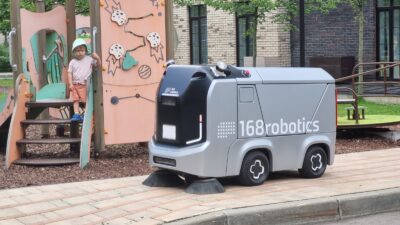What is Edge Computing?
Edge computing brings data processing closer to the source, where data travels to distant servers. In the context of smart lighting systems, this means that data analysis and decision-making occur within the lighting system itself. This localized approach significantly reduces latency, enhances responsiveness, and optimizes energy consumption.
Energy Efficiency and Sustainability
Edge computing enables real-time analysis of occupancy patterns, daylight availability, and user preferences. This data-driven approach allows for dynamic adjustments to lighting levels, ensuring optimal illumination while minimizing energy waste. By intelligently adapting to changing conditions, smart lighting systems powered by edge computing can significantly reduce energy consumption, contributing to a more sustainable future.
Enhanced Responsiveness and Control
With edge computing, smart lighting systems can respond instantly to user commands and environmental changes. Whether it’s adjusting brightness levels, changing color temperatures, or creating personalized lighting scenes, the immediacy of edge computing enhances user experience and provides granular control over lighting environments.
Data Privacy and Security
Edge computing addresses data privacy concerns by keeping sensitive information within the local network. This reduces the risk of data breaches and unauthorized access, ensuring that user preferences and building occupancy data remain secure.
Scalability and Flexibility
Edge computing architecture is inherently scalable, allowing for the seamless addition of new lighting fixtures and sensors as needed. This flexibility ensures that smart lighting systems can adapt to evolving building layouts and usage patterns.
Applications of Edge Computing in Smart Lighting
Edge computing opens up a wide array of possibilities for smart lighting systems:
Occupancy-Based Lighting
By utilizing motion sensors and occupancy data, edge computing can automatically adjust lighting levels based on real-time occupancy. This ensures that lights are only on when and where they are needed, maximizing energy savings.
Daylight Harvesting
Integrating light sensors with edge computing enables smart lighting systems to leverage natural daylight. By dimming or turning off lights when sufficient daylight is available, this approach significantly reduces energy consumption while maintaining optimal illumination levels.
Personalized Lighting Experiences
Edge computing empowers users to create personalized lighting scenes tailored to their preferences. Whether it’s a warm and inviting ambiance for relaxation or a bright and focused setting for work, edge computing enables the customization of lighting environments.
Predictive Maintenance
By continuously monitoring the performance and health of lighting fixtures, edge computing can identify potential issues before they escalate into failures. This proactive approach to maintenance minimizes downtime, reduces repair costs, and extends the lifespan of lighting systems.
Integration with Building Automation Systems
Edge computing seamlessly integrates smart lighting systems with other building automation components, such as HVAC and security systems. This holistic approach optimizes overall building performance, enhances occupant comfort, and streamlines facility management.
The Future of Smart Lighting with Edge Computing
The convergence of edge computing and smart lighting is poised to reshape the way we illuminate our spaces. As technology continues to evolve, we can expect even more sophisticated applications and benefits:
Advanced Analytics and Insights
Edge computing will enable deeper analysis of lighting data, generating valuable insights into energy consumption patterns, occupancy trends, and user preferences. This information can inform decision-making regarding lighting design, building layout, and energy management strategies.
Enhanced Artificial Intelligence Capabilities
The integration of artificial intelligence (AI) with edge computing will unlock new levels of intelligence in smart lighting systems. AI algorithms can analyze vast amounts of data to identify patterns, predict behaviors, and autonomously optimize lighting conditions.
Seamless Integration with Smart City Infrastructure
Edge computing will facilitate the integration of smart lighting systems with broader smart city initiatives. By connecting with traffic management systems, public safety networks, and environmental sensors, smart lighting can contribute to the creation of safer, more efficient, and more sustainable urban environments.
Real-World Examples of Edge Computing in Smart Lighting
Several pioneering projects have already demonstrated the tangible benefits of edge computing in smart lighting:
The Edge in Smart Office Buildings
In modern office buildings, edge computing-powered lighting systems have been implemented to optimize energy use based on real-time occupancy data. These systems adjust lighting levels in response to the presence or absence of employees, ensuring that energy is not wasted in unoccupied areas.
Smart Street Lighting Initiatives
Cities around the world are adopting smart street lighting solutions that incorporate edge computing. These systems can dynamically adjust lighting levels based on traffic flow, pedestrian activity, and time of day, enhancing safety and reducing energy consumption.
Industrial Applications
In industrial settings, edge computing is enabling smart lighting systems to monitor and control lighting in complex environments. By adapting to the specific needs of each area, these systems optimize illumination for safety, productivity, and energy efficiency.
Challenges and Considerations
While the potential of edge computing in smart lighting is immense, there are some challenges and considerations to keep in mind:
Cost and Complexity
Implementing edge computing infrastructure can be costly and complex, especially in large-scale deployments. Careful planning and consideration of long-term benefits are essential for successful implementation.
Data Management and Security
The vast amounts of data generated by smart lighting systems require robust data management and security measures. Ensuring the privacy and integrity of data is paramount for building trust and maximizing the benefits of edge computing.
Embracing the Power of Edge Computing
The efficiency of smart lighting systems is dramatically improved by edge computing. As we embrace this transformative technology, we can expect a brighter, more sustainable, and more intelligent future for lighting. By leveraging the power of edge computing, we can illuminate our spaces in ways that were once unimaginable, enhancing energy efficiency, improving user experiences, and creating a more harmonious relationship between technology and the environment.
#edgecomputing #smartlighting #energyefficiency #sustainability #buildingautomation #IoT #smartbuildings #smartcities #AI #predictivemaintenance #datasecurity #personalization























